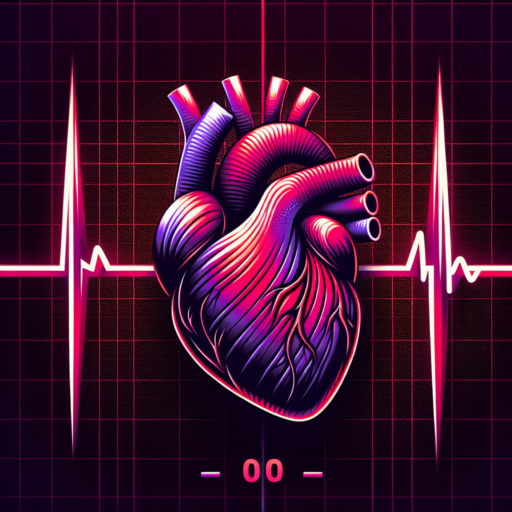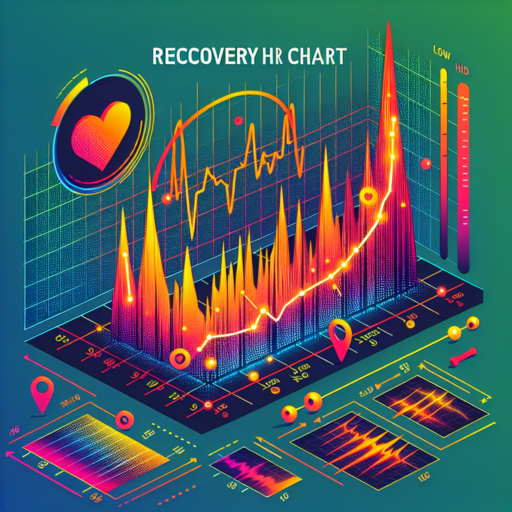Understanding Heart’s Pace: What It Means for Your Health
The heart’s pace, or heart rate, is a vital indicator of your overall health and wellbeing. It refers to the number of times your heart beats per minute and can vary significantly based on several factors, including activity level, stress, and even air temperature. Understanding the nuances of your heart’s pace is essential because it gives insights into your cardiovascular fitness, potential heart health issues, and your body’s response to different environments and activities.
At a fundamental level, a normal resting heart rate for adults ranges from 60 to 100 beats per minute (bpm). However, athletes or individuals with higher levels of physical fitness often experience lower resting heart rates, due to their heart’s efficiency in pumping blood throughout the body. Conversely, a consistently high resting heart rate may signal underlying health issues, such as high blood pressure or cardiovascular disease. Therefore, monitoring your heart’s pace can be a preventative measure, helping to detect potential health problems early.
The Impact of Lifestyle on Heart’s Pace
Lifestyle plays a pivotal role in managing your heart’s health. Factors such as diet, exercise, and stress levels directly influence your heart rate. For instance, engaging in regular physical activity can help lower your resting heart rate over time, indicating improved heart health. On the other hand, prolonged periods of stress or consuming high amounts of caffeine can increase your heart rate, leading to potential health risks if sustained over long periods. Being mindful of these lifestyle factors can help you maintain a healthy heart pace, benefiting your overall health.
The Importance of Monitoring Your Heart’s Pace
Monitoring your heart’s pace, or heart rate, is a crucial aspect of maintaining cardiovascular health. It involves keeping track of how fast your heart beats per minute, which can reveal a lot about your overall well-being and fitness level. Whether you’re an athlete pushing your limits or someone interested in general health, understanding and observing your heart’s pace can guide you in making informed lifestyle decisions.
Identifying Abnormal Heart Rates: An essential reason to monitor your heart’s pace is to detect any abnormalities early. A heart rate that’s too fast (tachycardia) or too slow (bradycardia) can indicate various potential health issues, ranging from stress-related conditions to more serious heart problems. Regular monitoring allows for the early detection of these issues, enabling timely medical intervention.
How to Monitor Your Heart’s Pace
Advancements in technology have made it easier than ever to keep an eye on your heart rate. From wearable tech like smartwatches and fitness trackers to traditional methods such as palpation techniques and monitoring during medical exams, there are several approaches to choose from. The key is to find a method that works best for you and to stick with it consistently for accurate tracking over time.
Adjusting Exercise Routines: For those engaging in physical activities, monitoring your heart’s pace is invaluable in adjusting your exercise routines for optimal performance and safety. By understanding your heart rate zones, you can tailor your workouts to improve endurance, strength, or recovery, and avoid overexertion that might lead to injury or other health issues.
How to Naturally Regulate Your Heart’s Pace
Maintaining a healthy heart rhythm is essential for overall health and vitality. While medication and medical procedures can adjust heart rate, there are natural ways to regulate your heart’s pace. Embracing a lifestyle that supports heart health can lead to significant benefits.
Importance of Aerobic Exercise
One of the most effective strategies for regulating your heart’s pace is engaging in regular aerobic exercise. Activities such as walking, jogging, swimming, or cycling can strengthen your heart muscle, improve blood circulation, and lead to a more efficient and controlled heart rate. Starting with moderate activities and gradually increasing intensity ensures a safe and beneficial workout.
Stress Management Techniques
Stress plays a crucial role in heart rate fluctuations. Adopting stress management techniques like meditation, deep breathing exercises, and yoga can help calm the mind and, in turn, regulate the heart rate. Incorporating these practices into your daily routine can lower stress-induced heart rate spikes and contribute to a steadier heart rhythm.
Nutrition also plays a pivotal role in heart health. Consuming a balanced diet rich in fruits, vegetables, whole grains, and lean proteins can prevent high blood pressure and cholesterol, which are risk factors for heart rhythm disorders. Avoiding excessive caffeine and alcohol is equally important, as both can disrupt your heart’s natural pacing.
Technological Advances in Tracking Heart’s Pace
The role of technology in healthcare, particularly in monitoring cardiac functions, has seen a significant evolution over the years. Innovations in medical technology have paved the way for more accurate, non-invasive methods to track the heart’s pace, offering an insightful glance into the heart’s rhythm and overall health. These technological advances not only improve the precision in diagnosis but also enhance patient comfort and convenience.
Wearable Technology for Continuous Monitoring
One of the most impactful breakthroughs in this area is the development of wearable technology. Devices such as smartwatches and fitness trackers now come equipped with sensors capable of measuring heart rate continuously. This allows for real-time monitoring of the heart’s pace, enabling users to detect irregularities early on. The data collected by these devices can be invaluable for medical professionals in diagnosing and managing cardiac conditions. Moreover, the convenience and accessibility of wearable technology mean that keeping track of heart health has never been easier.
Implantable Monitoring Devices
Apart from wearable tech, the medical field has seen significant advancements in implantable devices designed to monitor the heart’s pace. These devices, such as pacemakers and loop recorders, are implanted directly into the patient’s body. They provide continuous, accurate measurements of the heart’s rhythm, invaluable for patients with serious heart conditions. The data gathered by these implantable devices can be remotely accessed by healthcare providers, ensuring timely intervention when necessary.
In conclusion, the technological advances in tracking the heart’s pace have transformed cardiac care, making it more proactive, personalized, and precise. From wearable gadgets that offer continuous monitoring to implantable devices providing in-depth insights, technology continues to play a crucial role in the quest for better heart health.
Heart’s Pace Abnormalities: When to Seek Medical Advice
Understanding when to seek medical advice for heart’s pace abnormalities is crucial for maintaining heart health. Abnormal cardiac rhythms, known as arrhythmias, can manifest in various forms, such as palpitations, skipped beats, or a racing heart. Recognizing the signs that indicate a need for medical evaluation can be life-saving.
Signs and Symptoms of Concern
While many arrhythmias are harmless and momentary, certain symptoms should prompt immediate medical attention. These include:
- Chest pain or discomfort which may indicate a more significant heart problem.
- Severe shortness of breath, suggesting your heart is struggling to meet your body’s demands.
- Dizziness or lightheadedness, which can signal a drop in blood pressure due to the heart’s inability to pump effectively.
- Fainting or near fainting, which may occur when the heart is not delivering enough blood to the brain.
These symptoms could be a sign of a more serious heart condition that requires immediate attention. It’s particularly important to pay attention to these signs if you have a family history of heart disease or other risk factors, such as high blood pressure, diabetes, obesity, or smoking.
Preventive Measures and When to Act
Preventive measures, including regular physical activity, maintaining a healthy diet, and managing risk factors, play a key role in preventing heart’s pace abnormalities. However, if you experience any of the warning signs mentioned above, it’s critical to seek medical advice promptly. Early detection and treatment of arrhythmias can prevent more severe heart conditions from developing and ensure a better quality of life.
Exercise and Heart’s Pace: Finding the Right Balance
Finding the right balance between exercise and maintaining a healthy heart’s pace is crucial for achieving optimal health benefits without overstraining your cardiovascular system. The key lies in understanding the intensity and duration of exercise that complements your heart’s capabilities, ensuring that you enhance your fitness without risking harm.
Identify Your Personal Heart Rate Zones
Identifying your personal heart rate zones is a foundational step towards finding this balance. Utilizing tools such as heart rate monitors or smart watches can provide real-time feedback on how hard your heart works during exercise. Tailoring your workout intensity within safe heart rate zones, notably the aerobic zone—which is usually 70% to 80% of your maximum heart rate—stimulates cardiovascular improvement without overburdening your heart.
Listen to Your Body’s Signals
Equally important is the ability to listen to your body’s signals. Symptoms such as excessive fatigue, dizziness, or palpitations during or after a workout can be red flags indicating that your heart’s pace is not in harmony with your exercise regimen. By being attuned to these signs and adjusting your exercise intensity accordingly, you can maintain a healthy equilibrium between improving cardiovascular health and safeguarding your heart.
Incorporating a variety of exercises can also play a significant role in finding the right balance. Mixing high-intensity workouts with lower-intensity sessions such as walking, yoga, or swimming can help manage your heart’s workload across your fitness routine. Remember, achieving the ideal heart’s pace during exercise is a dynamic process that should be continuously assessed and adjusted based on your body’s feedback and progression.
Heart’s Pace and Stress: Managing the Connection for Better Health
Understanding the intrinsic link between the rhythm of our heart and the levels of stress we experience is crucial for maintaining optimum health. The heart does not merely function as a biological pump but also as an emotional sentinel, responding acutely to our stress levels. Managing this connection between heart’s pace and stress can lead to significantly better health outcomes, highlighting the importance of both physical and emotional well-being in our lives.
Stress, a pervasive aspect of modern life, has a profound impact on the heart by accelerating its rate, raising blood pressure, and increasing the risk of heart disease. The fight-or-flight response, triggered by stress, causes the release of adrenaline, which in turn increases heart rate and elevates blood pressure, preparing the body for immediate action. While this response is essential for survival, persistent activation due to chronic stress can lead to harmful effects on the heart, underscoring the necessity of effective stress management strategies.
Limiting the negative health impacts of stress on the heart involves incorporating both behavioral changes and lifestyle adjustments. Techniques such as mindful meditation, regular physical exercise, and establishing a healthy work-life balance have been shown to be effective in mitigating the effects of stress. Furthermore, adopting a heart-healthy diet, rich in omega-3 fatty acids, fruits, and vegetables, can enhance cardiovascular health and resilience against stress-induced heart issues. Acknowledging the significance of these strategies is the first step towards fostering a healthier heart and a more balanced life.
No se han encontrado productos.
Diet’s Impact on Your Heart’s Pace: Foods to Favor and Avoid
Understanding the profound impact diet has on your heart’s health is crucial in maintaining a rhythm that beats to the tune of longevity and wellness. The foods you consume can directly influence your heart’s pace, potentially preventing heart disease or exacerbating existing conditions. This insight leads us to consider not just what we eat but how those choices support or hinder our heart’s well-functioning.
Foods to Favor for a Healthy Heart
Embracing a heart-healthy diet means incorporating foods rich in nutrients, fibers, and healthy fats. Leafy green vegetables such as spinach and kale are high in vitamin K, which promotes proper blood clotting and arterial health. Similarly, whole grains like oats and barley contribute to the maintenance of a healthy blood pressure, reducing the risk of heart disease. Equally important are fatty fish, a source of omega-3 fatty acids, known for lowering blood pressure and decreasing triglycerides.
Foods to Avoid to Keep Your Heart Pacing Right
Just as some foods can play a protective role for your heart, others can pose significant risks. Processed and fast foods, high in trans fats and sodium, can lead to increased blood pressure and cholesterol levels, threatening your heart’s health. Similarly, excessive sugar intake, often found in soft drinks and sweets, is linked to obesity, a known risk factor for heart disease. Limiting these foods can greatly benefit your heart’s rhythm and overall health.
Understanding the Link Between Sleep and Heart’s Pace
The relationship between sleep and the heart’s pace reflects a critical area within health science, revealing how sleep quality significantly influences heart function. Sleep deprivation and disorders have been directly linked to increased risks of heart disease, emphasizing the importance of sufficient and quality rest for maintaining heart health.
Research has shown that lack of sleep can cause disruptions in underlying health conditions, which in turn can accelerate the heart’s pace, leading to hypertension and increased stress levels. These alterations in heart functionality point to the need for a deeper understanding of how sleep affects our cardiovascular system. This connection helps in developing targeted interventions aimed at improving sleep quality to ensure a healthy heart rhythm.
The Role of Sleep in Regulating Heart Rate
Sleep plays a pivotal role in regulating the heart’s pace. During the different stages of sleep, especially deep REM sleep, the heart rate slows, blood pressure drops, and the body undergoes repair processes. This period of reduced demand on the heart is critical for maintaining cardiovascular health and preventing diseases. Conversely, a disrupted sleep pattern can lead to an increased heart rate and higher blood pressure, posing significant risks to the heart’s health over time.
Meditation and Relaxation Techniques to Improve Your Heart’s Pace
The often overlooked relationship between mental calmness and cardiac health is gaining attention in the realm of modern medicine. Techniques centered on meditation and relaxation not only contribute to a serene mind but also have profound effects on improving the heart’s pace. Incorporating these practices into daily routines can yield significant benefits for both physical and emotional wellness.
Meditation plays a pivotal role in controlling heart rate and promoting cardiovascular efficiency. It encourages a state of restful awareness that helps regulate the body’s stress response mechanisms. This, in turn, can reduce blood pressure, lower the risk of heart disease, and improve overall heart rhythm. Guided imagery, mindfulness, and deep breathing exercises are prime examples of meditation techniques that foster a peaceful heart-mind connection.
Relaxation Techniques, such as progressive muscle relaxation and biofeedback, complement meditation by further alleviating tension throughout the body. These methods not only assist in relaxing the musculoskeletal system but also have a calming effect on the heart. By learning to control physical responses to stress, individuals can enhance heart rate variability, a key indicator of cardiovascular health and resilience.
Simple Steps to Begin
- Start with short, 5-minute meditation sessions and progressively increase the duration as you become more comfortable.
- Incorporate deep breathing exercises into your daily routine, especially during moments of stress.
- Explore different meditation and relaxation techniques to find what works best for you, remembering that individual preferences and effectiveness can vary widely.




